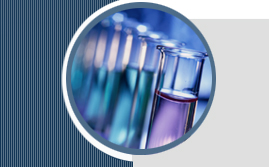

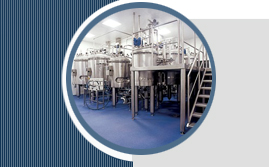

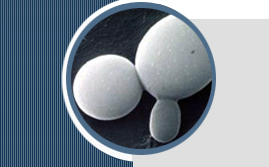

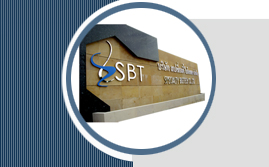


The below titles are part of useful supporting publications from various well-known journal to ensure the beneficialness of yeast products Yeast cell wall and Mannanoligosaccharide (MOS) Toxin binder -Effects of feeding a blend of grains naturally contaminated with Fusarium mycotoxins on swine performance, brain regional neurochemistry, and serum chemistry and the efficacy of a polymeric glucomannan mycotoxin adsorbent (For more detail please visit http://jas.fass.org/)-Effects of feeding a blend of grains naturally contaminated with Fusarium mycotoxins on feed intake, serum chemistry, and hematology of horses, and the efficacy of a polymeric glucomannan mycotoxin adsorbent. (For more detail please visit http://jas.fass.org/) -Efficacy of Esterified Glucomannan to Counteract Mycotoxicosis in Naturally Contaminated Feed on Performance and Serum Biochemical and Hematological Parameters in Broilers. (For more detail please visit http://www.poultryscience.org/ps/) -Influence of esterified-glucomannan on performance and organ morphology, serum biochemistry and haematology in broilers exposed to individual and combined mycotoxicosis (aflatoxin, ochratoxin and T-2 toxin). (For more detail please visit http://www.ingentaconnect.com/content/tandf/cbps) -Effect of temperature on in vitro ochratoxin A biosorption onto yeast cell wall derivatives. (For more detail please visit http://www.elsevier.com/locate/procbio)-Evaluation of the Efficacy of Saccharomyces cerevisiae Cell Wall to Ameliorate the Toxic Effects of Aflatoxin in Broilers. (For more detail please visit http://www.pjbs.org/ijps/ijps.htm)
Effects of feeding a blend of grains naturally contaminated with Fusarium mycotoxins on swine performance, brain regional neurochemistry, and serum chemistry and the efficacy of a polymeric glucomannan mycotoxin adsorbent
H. V. L. N. Swamy*, T. K. Smith*2, E. J. MacDonald†, H. J. Boermans‡, and E. J. Squires* *Department of Animal and Poultry Science, University of Guelph, Guelph, ON N1G 2W1, Canada; †Department of Pharmacology and Toxicology, University of Kuopio, P.O. Box 1627, Fin-70211 Kuopio, Finland; and ‡Biomedical Sciences, Ontario Veterinary College, University of Guelph, Guelph, ON N1G 2W1, Canada ABSTRACT The co-occurrence of Fusarium mycotoxins in contaminated swine diets has been shown to result in synergistic toxicity beyond that observed for individual toxins. An experiment was conducted, therefore, to investigate the effects of feeding a blend of grains naturally contaminated with Fusarium mycotoxins on growth, brain regional neurochemistry, serum immunoglobulin (Ig) concentrations, serum chemistry, hematology, and organ weights of starter pigs. Three levels of glucomannan polymer (GM polymer, extract of yeast cell wall, Alltech Inc.) were also tested for its efficacy to overcome Fusarium mycotoxicoses. A total of 175 starter pigs (initial weight of 10 ± 1.1 kg) were fed five diets (seven pens of five pigs per diet) for 21 d. Diets included (1) control, (2) blend of contaminated grains, (3) contaminated grains + 0.05% GM polymer (4) contaminated grains + 0.10% GM polymer and (5) contaminated grains + 0.20% GM polymer. Diets containing contaminated grains averaged 5.5 ppm deoxynivalenol, 0.5 ppm 15-acetyldeoxynivalenol, 26.8 ppm fusaric acid, and 0.4 ppm zearalenone. Feed intake and weight gain of all pigs fed contaminated grains was significantly reduced compared to controls throughout the experiment. The weights of liver and kidney, expressed as a percentage of body weight, were lower in pigs fed the contaminated diet than in those fed the control diet. The feeding of contaminated grains significantly reduced concentrations of dopamine in the hypothalamus and pons and concentrations of dihydroxyphenylacetic acid and norepinephrine in the pons. The ratios of 5-hydroxyindoleacetic acid to serotonin, however, were elevated in the hypothalamus and pons. The feeding of contaminated grains increased serum IgM and IgA concentrations, while serum IgG concentrations were not altered. The supplementation of GM polymer prevented some of the mycotoxin-induced alterations in brain neurotransmitter and serum Ig concentrations. In summary, the feeding of grains naturally contaminated with Fusarium mycotoxins reduced growth, altered brain neurochemistry, increased serum Ig concentrations, and decreased organ weights in starter pigs. Some of the Fusarium mycotoxin-induced changes in neurochemistry and serum Ig concentrations can be prevented by the feeding of yeast cell wall polymer at appropriate concentrations, although this was not reflected in increased growth rate under these experimental conditions. Keywords: Fusaric Acid, Fusarium Mycotoxins, Immunoglobulins, Neurochemistry, Pigs, Vomitoxin Credited by: Effects of feeding a blend of grains naturally contaminated with Fusarium mycotoxins on feed intake, serum chemistry, and hematology of horses, and the efficacy of a polymeric glucomannan mycotoxin adsorbent S. L. Raymond*, T. K. Smith†2, and H. V. L. N. Swamy† *Equine Research Centre and †Department of Animal and Poultry Science, University of Guelph, Guelph, ON N1G 2W1, Canada ABSTRACT The feeding of Fusarium mycotoxincontaminated grains adversely affects the performance of swine and poultry. Very little information is available, however, on adverse effects associated with feeding these mycotoxin-contaminated grains on the performance of horses. An experiment was conducted to investigate the effects of feeding a blend of grains naturally contaminated with Fusarium mycotoxins on feed intake, serum immunoglobulin (Ig) concentrations, serum chemistry, and hematology of horses. A polymeric glucomannan mycotoxin adsorbent (GM polymer) was also tested for efficacy in preventing Fusarium mycotoxicoses. Nine mature, nonexercising, light, mixed-breed mares were assigned randomly to one of three dietary treatments for 21 d. The horses were randomly reassigned and the experiment was subsequently replicated in time following a 14-d washout interval. Feed consumed each day was a combination of up to 2.8 kg of concentrates and 5 kg of mixed timothy/alfalfa hay. The concentrates fed included the following: 1) control, 2) blend of contaminated grains (36% contaminated wheat and 53% contaminated corn), and 3) blend of contaminated grains + 0.2% GM polymer. Diets containing con- taminated grains averaged 15.0 ppm of deoxynivalenol, 0.8 ppm of 15-acetyldeoxynivalenol, 9.7 ppm of fusaric acid, and 2.0 ppm of zearalenone. Feed intake by all horses fed contaminated grains was reduced (P < 0.001) compared with controls throughout the experiment. Supplementation of 0.2% GM polymer to the contaminated diet increased (P = 0.004) feed intake of horses compared with those fed the unsupplemented contaminated diet. Serum activities of γ -glutamyltransferase were higher (P = 0.047 and 0.027) in horses fed the diet containing contaminated grain compared with those fed the control diet on d 7 and 14, but not on d 21 (P = 0.273). Supplementation ofGMpolymer to the contaminated diet decreased (P < 0.05) serum γ -glutamyltransferase activities of horses compared with those fed unsupplemented contaminated diet on d 7 and 14. Other hematology and serum chemistry measurements including serum IgM, IgG, and IgA, were not affected by diet. It was concluded that the feeding of grains naturally contaminated with Fusarium mycotoxins caused a decrease in feed intake and altered serum gamma glutamyltransferase activities. The supplementation of GM polymer prevented these mycotoxininduced adverse effects. Keywords: Fusaric Acid, Fusarium, Horses, Mycotoxins, Vomitoxin Credited by:
Efficacy of Esterified Glucomannan to Counteract Mycotoxicosis in Naturally Contaminated Feed on Performance and Serum Biochemical and Hematological Parameters in Broilers K. L. Aravind, V. S. Patil, G. Devegowda,1,2 B. Umakantha, and S. P. GanpuleDepartment of Poultry Science, University of Agricultural Sciences, Hebbal, Bangalore—560 024, India ABSTRACT A study was conducted to determine the efficacy of esterified glucomannan in counteracting the toxic effects of mycotoxins in naturally contaminated diet (aflatoxin 168 ppb, ochratoxin 8.4 ppb, zearalenone 54 ppb, and T-2 toxin 32 ppb) fed to commercial broilers. One-day-old broiler chicks were randomly assigned to one of the four dietary treatments with five replicates of 14 chicks each. Four dietary treatments were 1) control; 2) esterified glucomannan, an adsorbent, tested at 0.05% of diet; 3) naturally contaminated diet; and 4) esterified glucomannan (0.05%) plus naturally contaminated diet. Body weight, feed consumption, feed efficiency, hematology, and serum biochemical and enzyme activities were evaluated. Compared with the control, the naturally contaminated diet significantly decreased body weight and feed consumption and resulted in poor feed efficiency. Esterified glucomannan effectively alleviated the growth depression caused by the naturally contaminated diet. Increased relative weights of liver and gizzard were observed in chicks fed the naturally contaminated diet. Further, feeding a naturally contaminated diet was associated with significant decreases in urea nitrogen and hematocrit values along with altered γ -glutamyl transferase activity; however, urea nitrogen concentration was improved with addition of esterified glucomannan. These findings suggest that addition of dietary esterified glucomannan is effective in counteracting the toxic effects of naturally contaminated feed with mycotoxins. Keywords: broiler, esterified glucomannan, mycotoxicosis, naturally contaminated feed, performance Credited by:
Influence of esterified-glucomannan on performance and organ morphology, serum biochemistry and haematology in broilers exposed to individual and combined mycotoxicosis (aflatoxin, ochratoxin and T-2 toxin) M.V.L.N. RAJU AND G. DEVEGOWDADepartment of Poultry Science, University of Agricultural Sciences, Hebbal, Bangalore India ABSTRACT 1. A study was conducted to evaluate the individual and combined effects of aflatoxin B1 (AF), ochratoxin A (OA) and T-2 toxin (T-2) on performance, organ morphology, serum biochemistry and haematology of broiler chickens and the efficacy of esterified-glucomannan (E-GM), a cell wall derivative of Saccharomyces cerevisiae1026 in their counteraction. 2. Two dietary inclusion rates of AF (0 and 0·3 mg/kg), OA (0 and 2 mg/kg), T-2 (0 and 3 mg/kg) and E-GM (0 and 1 g/kg) were tested in a 2 × 2 × 2 × 2 factorial manner on a total of 960 broiler chickens from 1 to 35 d of age in an open sided deep litter pen house. 3. Body weight and food intake were depressed by all the mycotoxins, OA being the most toxic during early life. 4. Weights of kidney and adrenals were increased by AF and OA. Liver weight was increased by AF (17·8%), while OA increased gizzard weight (14·6%) and reduced bone ash content (8·1%). T-2 toxin showed no effect on these variables. 5. Serum cholesterol content was decreased and activity of serum gamma glutamyl transferase (GGT) was increased by AF and OA while serum protein content was decreased by AF. These effects were more pronounced at 21 d than at 35 d of age. Inconsistent responses were seen in the other variables: blood urea nitrogen (BUN) content, activities of serum alanine amino transferase and aspertate amino transferase. Blood haemoglobin content was depressed by AF and T-2, whereas blood coagulation time was prolonged by OA. 6. Significant interactions were observed between any 2 toxins for their additive effects on body weight, food intake, bone ash content and serum GGT activity at 21 d. Conversely, antagonistic interactions were observed among any 2 of the toxins for their effects on variables such as serum protein and serum cholesterol content. Simultaneous feeding of all 3 mycotoxins did not show increased toxicity above that seen with any 2. 7. Esterified-glucomannan increased body weight (2·26%) and food intake (1·6%), decreased weights of liver (32·5%) and adrenals (18·9%) and activity of serum GGT (8·7%), and increased serum protein (14·7%), cholesterol (21·9%), BUN (20·8%) and blood haemoglobin (3·1%) content, indicating its possible beneficial effect on mycotoxicosis in broiler chickens. Credited by: ã 2000 British Poultry Science Ltd British Poultry Science 41(2000),640–650
Effect of temperature on in vitro ochratoxin A biosorption onto yeast cell wall derivatives Diana Ringot a , Benoit Lerzy a , Jean Paul Bonhoure a,b , Eric Auclair c , Eric Oriol d , Yvan Larondelle e a Institut Supe´rieur d’Agriculture de Beauvais, Rue Pierre Waguet, BP 30313, Beauvais, Cedex 60026, France ABSTRACT In vitro biosorption of ochratoxin A (OA) onto three yeast industry products: a vinasse containing yeast cell walls (EX16), a purified yeast beta glucan (BETA) and a yeast cell wall fraction (LEC), has been studied as a function of the temperature. Equilibrium binding assays were performed from 4 to 37 8C. The best models for OA biosorption onto EX16, BETA and LEC were identified as respectively Hill’s, Freundlich and Brunauer-Emmett-Teller models. LEC was the most effective adsorbent for OA removal in aqueous solutions. All biosorption processes were spontaneous (negative Δ G 0) and exothermic (negative Δ H 0). For EX16 and BETA, the favourable enthalpic contributions (negative Δ H 0 values) to OA binding, were associated to unfavourable entropic contributions (negative Δ S 0 values). By contrast, the entropic contribution to OA binding was favourable (positive Δ S 0 values) in the case of LEC. The calculated values of the heat capacity ( Δ Cp) were close to zero, indicating the absence of a temperature dependency for D H and D S. The results suggest that the remarkable OA biosorption onto LEC involves both polar and non-polar non-covalent interactions and the concomitant reorganization of the water molecules of the solvent. Keywords: Ochratoxin A (OA); Biosorption; Yeast cell wall derivatives; Isotherms; Thermodynamic parameters Credited by: Evaluation of the Efficacy of Saccharomyces cerevisiae Cell Wall to Ameliorate the Toxic Effects of Aflatoxin in Broilers Elizabeth Santin 2, Antonio Carlos Paulillo 1, Alex Maiorka 2, Laura Satiko Okada Nakaghi 1 , Marcos Macari 1, Ana Vitória Fischer da Silva 2and Antonio Carlos Alessi 1 1 Faculdade de Ciências Agrárias e Veterinárias, Universidade Estadual Paulista ABSTRACT A study was carried out to evaluate the efficacy of Saccharomyces cerevisiae (SC) as an inhibitor of aflatoxicosis in broilers. Clinic, pathologic, immune and productive aspects of broilers fed with aflatoxin in the diets were studied. The results showed that the feed intake and weight gain were negatively affected (P < 0.01) for aflatoxin in diet (1000 ppb). The SC (0, 20%) added to diet did not ameliorated the negatively aflatoxin effect at broiler weight gain, however the SC improve the feed conversion in this birds. The humoral immune response of broilers vaccinated against Newcastle virus disease (NDV) was reduced for aflatoxin in diet, as also the liver, kidneys and bursa of Fabricius were negatively affected for this toxin at diet. The SC did not improve the hemagglutination inhibiting antibody titers in birds fed with aflatoxin in diet, however improve the immune response of broilers at challenge with strain velogenic of NDV. Keywords: Broilers, aflatoxicosis, cellular wall S. cerevisiae, immune response Credited by: |
||
| |
|
||||
 |
 |
|
|||
| |
|||||
| |
|
||||
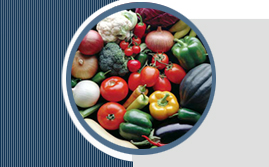 |
|
||||
Copyright ©2005 . Specialty Biotech Co.,Ltd. All Rights Reserved.
Amatanakorn Industrial Park 700/137 Moo 5, Klongtumroo Muang, Chonburi 20000 ThailandTel +66 (0)3845-8698 Fax +66 (0)3845-8697 Email: contact@sbtthai.com
| |
||||
| |
|
||||
| |
|||||
| |
|||||
| |
|
|
|||
| |
|
||||
| |
|
||||
 |
|
||||
|
|
||||